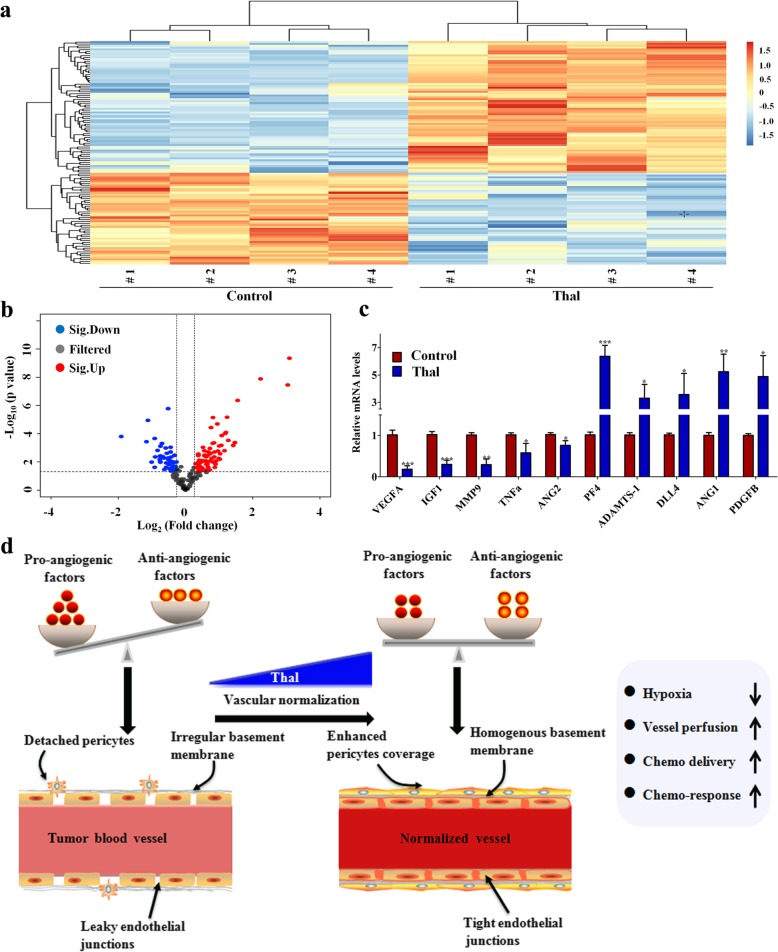Fig. 7.
Thal regulates vascular stabilization signature proteins. a Tumor lysates from control and Thal-treated group were applied to the angiogenesis antibody array (n = 4). A heatmap was used to classify the protein expression patterns in Thal-treated tumors compared to control tumors. Red color indicates upregulation and blue indicates downregulation. b Volcano plot of differentially expressed proteins between the Thal and control groups. The y-axis indicates the negative logarithm of the p-value; the x-axis indicates the base 2 logarithm of fold change. c The transcriptional levels of indicated angiogenesis-related factors in harvested tumors were measured by qRT-PCR (n = 3). β-actin was used as the control. Values are mean ± SD. *p < 0.05, ** p < 0.01, ***p < 0.001. d Schematic diagram depicting changes of tumor vascular system by Thal-induced vascular normalization in solid tumor. During tumor development, the tumor vascular abnormalities stem from an imbalance between angiogenic growth factors and angiogenic inhibitors in the local milieu. The abnormal tumor vessels are characterized by a disorganized and tortuous architecture with highly dysfunctional pericytes and leaky endothelial junctions, which impair tumor perfusion, and render it more hypoxic and chemoresistance (Left). By decreasing diverse pro-angiogenic factors and inducting vascular stabilization signature factors, Thal corrects the imbalance between pro- and anti-angiogenic factors and transforms abnormal tumor vasculatures towards a more inerratic and functional state. These phenotypic changes lead to decreased leakage, enhanced perfusion, and reduced hypoxia. Eventually, delivery of chemotherapeutic drugs was highly enhanced through the Thal-induced vascular normalization, leading to profound anti-tumor effects (Right)

